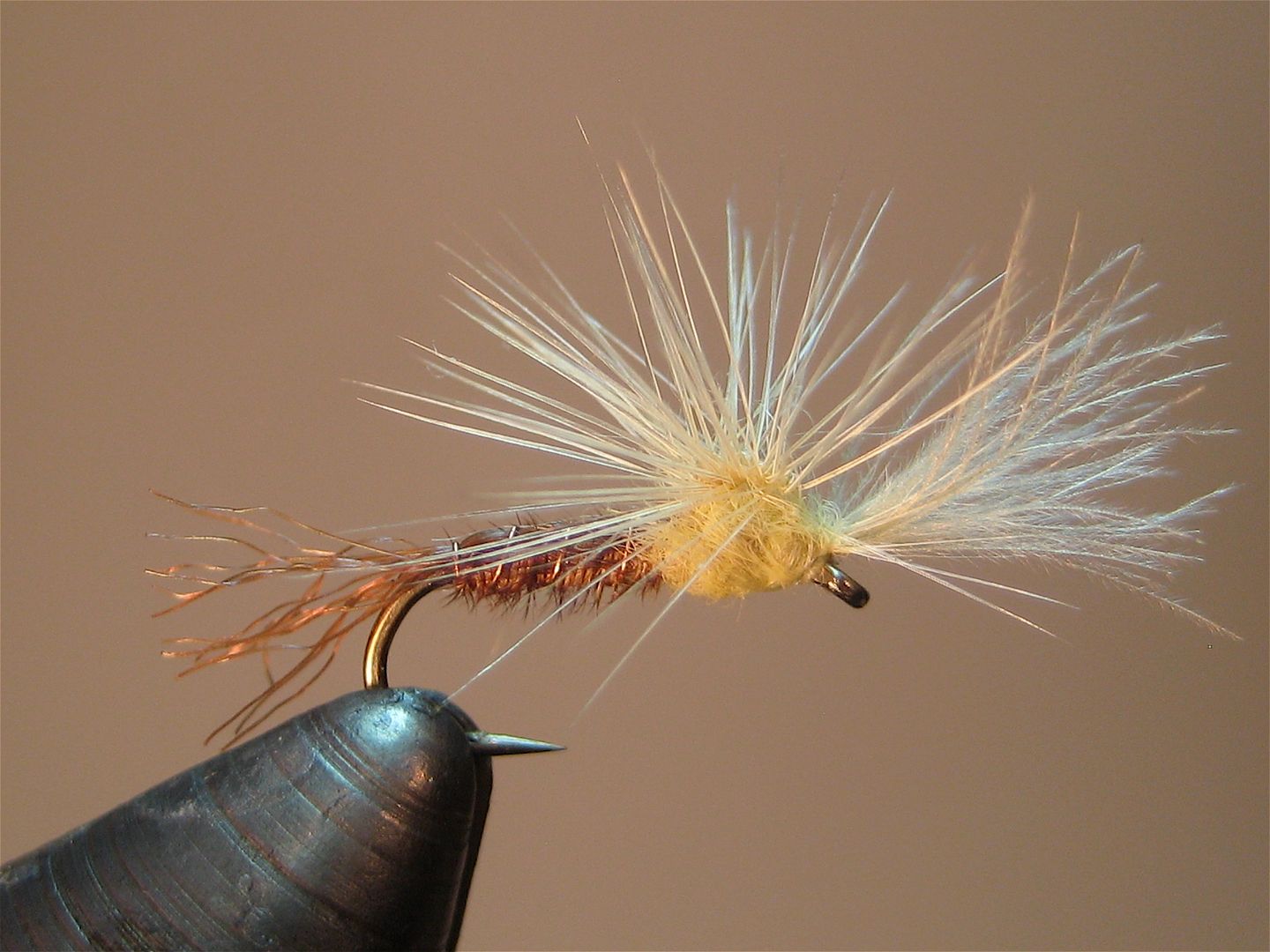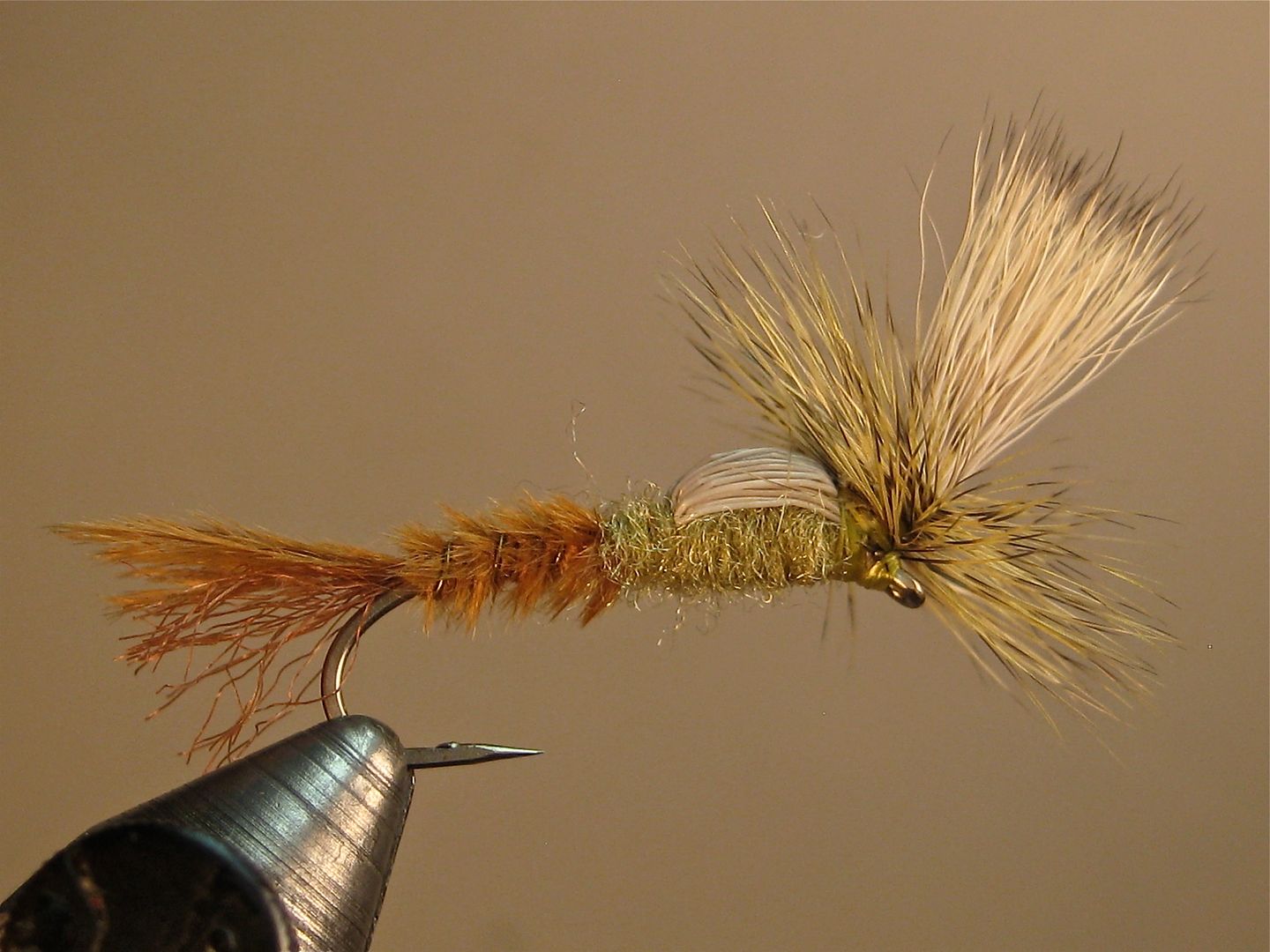

Originally Posted by
Bruce Norikane

Based on the bugs that I see in the water, horizontal seems closer to real bugs trapped in the film, but vertical seems to get me more strikes. I think the fish can spot the vertical body hanging down below the film/mirror from much farther away.
Also, I get pretty splashy takes on vertical cripples. You'd think the fish would sip the trapped cripple like a spinner.
Ya never know.
Cripples like emergers are a term used by fly fishers just like the terms duns and spinners are used. This implies to newbies that cripples and emergers have a uniform appearance, just like duns and spinners. They do NOT!!
Emergers are transitional, that is, they are in flux and changing in appearance. Similarly, cripples are basically emergers that for one reason or another cannot complete emergence. They may be stuck in the shuck, they may not be able to dry their wings ,or pump fluid into the wings to get them to expand. I view cripples as just emergers which are stuck at a stage of emergence, ie, they have failed to complete emergence.
That is the reason that the more vertical forms of "cripples' may get more takes. They imitate a stage of emergence. As to the splashy rises, that is also consistent with my theory that trout view "cripples" as emergers. They do not know that they are stuck in the shuck. They just know that the pattern looks like an emerger that can escape if they perform a leisurely rise.
A spinner has a classical appearance that correlates with a stage that NEVER escapes. Cripples do not. They imitate a stage in transition that CAN escape, hence a splashy rise may occur.
Look at 4:39 in the "Bugs of the Underworld" video below and you can see the process of emergence in real time. Imagine now that the emerging mayfly is stopped and stuck in the shuck. So are our "emerger" patterns really emergers or by imitating a single stage frozen in time, are they all more properly called stillborns/cripples?
You decide.
http://www.youtube.com/watch?v=4UjlT7fqJ1s
Gary Borger chooses to call these flies "film flies". Go to his discussion of emergence in his book Fishing the Film (pp. 35 - 37), and you will see that the Quigley Cripple represents a stage 5 emerger.
"The insect then completes the extraction process and begins 'Stage 5;' the final hardening of the wings necessary for the full adult stage. This is the time of the ... Quigley Cripple, and other sub-adult imitations."
When you look at the Mayfly Youtube video you will note that the nymphs do not suspend vertically. They suspend at an angle.
They orient themselves so that their dorsal (posterior) thorax is in the film and they break through the thorax so it acts as a window through which the crawl out of to emerge. When they begin to crawl out they have an amorphous shape that is ill defined. So the trout sees the nymphal portion of the emerger under the film, the thorax in the film, with the front portion of the emerging dun above the film. Look carefully and you can see the nymphal shuck empty as the mayfly crawls out of it's nymphal skin. Later, as the wings of the emerger begin to unfurl, the silhouette of the emerger above water gets larger and looks like the "cripple." Probably the most popular cripple pattern is the Quigley Cripple.
Quigley's Cripple

The reality is that we fish ALL OUR EMERGERS as cripples or stillborns.
All of our emerger flies represent only a single stage of emergence and only that stage during the entire drift of the fly. Note in the video that during emergence, the emerger is constantly morphing and changing it's shape. But out flies cannot and do not. Therefore, in a very real sense, all of our emerger patterns are stillborns or cripples because they represent an emerging insect that is stuck in a single stage of emergence.
I find the terms emerger, cripple, and stillborn to be identical when applied to the flies we use. Unless we somehow invent a fly that is a shape shifter, we can only imitate a emerger stuck at a single stage.
I have discussed this on this thread:
http://www.theflyfishingforum.com/fo...tml#post693197
Last edited by Silver Creek; 08-11-2016 at 12:28 AM.
Regards,
Silver
"Discovery consists of seeing what everybody has seen and thinking what nobody has thought"..........Szent-Gyorgy





 Reply With Quote
Reply With Quote


